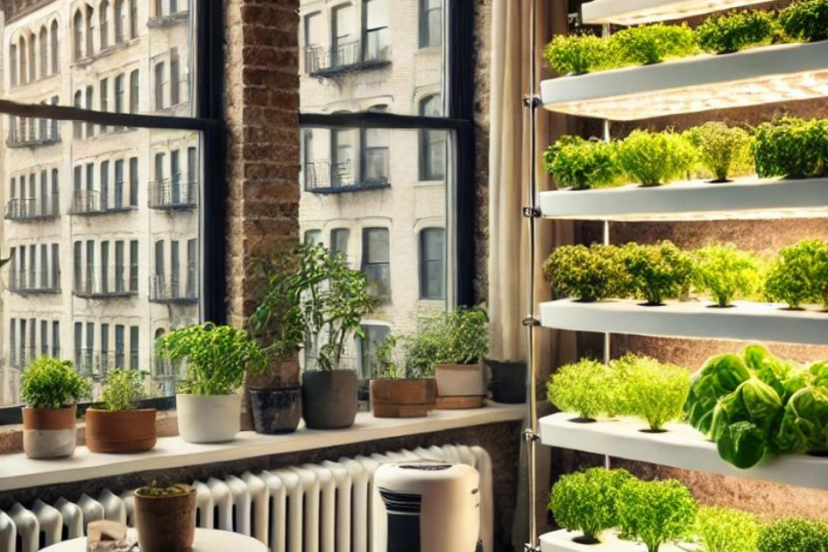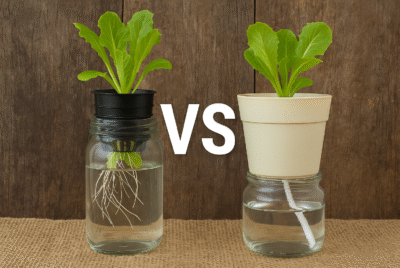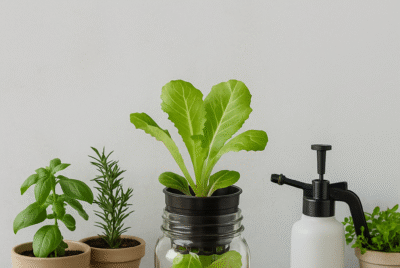Ebb and Flow Hydroponics: A Guide to Success
Introduction to Ebb and Flow Hydroponics
Hydroponics is a method of growing plants without soil by using water infused with nutrients. One of the simplest and most effective methods within this field is ebb and flow hydroponics. But what makes it so special?
Unlike aeroponics vs hydroponics debates, ebb and flow focuses on cycles of flooding and draining the plants. This method simulates natural growing conditions, allowing roots to get the perfect combination of oxygen, water, and nutrients.
Whether you’re growing leafy greens or fruiting plants, this system offers excellent flexibility and efficiency. As someone who has been growing plants using various hydroponic methods like kratky hydroponics and DWC hydroponics, I can vouch for ebb and flow being one of the most user-friendly setups.
How Ebb and Flow Hydroponics Works
The ebb and flow hydroponics system functions by periodically flooding the grow tray with nutrient-rich water and then draining it back into a reservoir. The plants are left in the grow tray, surrounded by a growing medium such as hydroponic clay pebbles, which provides support and helps retain moisture.
Key Components of the Setup
To set up an ebb and flow system, you’ll need the following:
1. Grow tray: Where your plants will sit and where the water will flood.
2. Reservoir: Holds the nutrient-rich water.
3. Submersible pump: Pumps water from the reservoir to the grow tray.
4. Timer: Controls when the pump turns on and off to manage flood and drain cycles.
5. Overflow drain: Ensures excess water flows back to the reservoir.
Recommendations for Key Components
1. Active Aqua Flood Table: Perfect for those just getting started with hydroponics.
2. Viagrow Reservoir: Durable and easy to clean.
3. EcoPlus Submersible Pump: High-quality and reliable for regular use.
4. Titan Controls Apollo 9 Timer: Precise control for your flood and drain cycles.
5. Hydrofarm Tubing Kit: Essential for a seamless water flow setup.
Benefits of Ebb and Flow Hydroponics
Why choose ebb and flow hydroponics over other systems like DWC hydroponics or kratky hydroponics? The benefits are numerous.
Space Efficiency
Ebb and flow systems are compact, which makes them perfect for growing in small spaces, such as apartments or balconies. You can even build a hydroponic tower DIY setup if you want to maximize vertical space.
5 Tips for Space Efficiency:
1. Use vertical racks to grow multiple plants in a small area.
2. Choose compact plants like herbs and lettuce to optimize space.
3. Use reflective materials to maximize light exposure.
4. Consider building a hydroponic tower garden to grow vertically.
5. Install your system in areas with lots of natural sunlight to save on artificial lighting.
Water Conservation
One of the biggest advantages is water conservation. Unlike traditional gardening, ebb and flow systems reuse water, making them extremely efficient. This not only saves water but also reduces your utility bills.
5 Tips for Water Conservation:
1. Keep your reservoir covered to reduce evaporation.
2. Use a high-quality pump to ensure efficient water cycling.
3. Regularly monitor for leaks to prevent water wastage.
4. Adjust flood cycles based on your plants’ needs.
5. Use an automatic water level indicator to track usage.
Nutrient Management
With ebb and flow, you can control exactly what nutrients your plants receive, which leads to better growth. Systems like DWC hydroponics and kratky hydroponics also offer this benefit, but ebb and flow allows for more precise control due to the regular flooding and draining.
5 Nutrient Management Tips:
1. Use high-quality hydroponics nutrients like General Hydroponics Flora Series.
2. Test your nutrient solution regularly with a pH meter.
3. Change your nutrient solution every two weeks to prevent buildup.
4. Keep your reservoir cool to avoid nutrient degradation.
5. Watch for nutrient deficiencies and adjust your formula accordingly.
Setting Up an Ebb and Flow Hydroponic System

Setting up your own ebb and flow system may seem daunting, but with the right tools and knowledge, it’s straightforward. Here’s how to get started.
Essential Equipment
1. Grow tray and reservoir: As mentioned earlier, these are the primary components.
2. Submersible pump and timer: You’ll need a reliable pump to move water to the grow tray, and a timer to automate the process.
3. Growing medium: Options include hydroponic clay pebbles, perlite, and rock wool.
5 Setup Recommendations:
1. Start with a small system if you’re new to hydroponics to minimize potential issues.
2. Use hydroponic clay pebbles for excellent drainage and aeration.
3. Choose a grow tray size that fits your available space.
4. Place your reservoir below the grow tray to enable gravity to drain the water back.
5. Install the system near a power source to easily connect the pump and timer.
Choosing the Right Medium for Ebb and Flow
The growing medium plays a critical role in ebb and flow hydroponics. It supports the plant roots and holds moisture between flood cycles. Popular choices include hydroponic clay pebbles, rock wool, and perlite.
Best Media Types
1. Hydroponic clay pebbles: Provides excellent aeration and is reusable.
2. Rock wool: Holds water well but can retain too much moisture if not monitored.
3. Perlite: Lightweight and inexpensive, but not as stable for larger plants.
4. Coco coir: Sustainable, retains moisture, but may require additional nutrients.
5. Lava rocks: Natural, long-lasting, and provide good drainage.
5 Recommendations for Media Use:
1. Use hydroponic clay pebbles for larger plants needing more aeration.
2. Combine rock wool with perlite for a good balance of moisture retention and drainage.
3. Avoid overly fine mediums, as they can clog your system.
4. Always rinse the growing medium before use to prevent contamination.
5. Reuse hydroponic clay pebbles by sterilizing them between crops.
Ideal Plants for Ebb and Flow Systems
Certain plants thrive in ebb and flow systems because of the consistent water and nutrient delivery. My personal favorites include leafy greens, herbs, and strawberries.
Recommended Plants
1. Lettuce: Fast-growing and ideal for beginners.
2. Basil: Thrives in hydroponics with little maintenance.
3. Strawberries: Benefit from the consistent moisture provided by the ebb and flow system.
4. Tomatoes: If you’re looking for fruiting plants, tomatoes do well with nutrient management.
5. Peppers: Another great option for those interested in fruiting plants.
5 Tips for Plant Selection:
1. Choose plants with shallow roots for easier management in smaller systems.
2. Start with leafy greens if you’re new to hydroponics.
3. Experiment with herbs like basil and mint—they thrive in ebb and flow.
4. Use fruiting plants like strawberries and tomatoes for longer-term projects.
5. Avoid root vegetables, as they don’t perform well in hydroponic setups.
Water and Nutrient Management in Ebb and Flow
Watering schedules and nutrient solutions are key to ensuring healthy plant growth in ebb and flow hydroponics. Your goal should be to balance flooding frequency and nutrient concentration based on plant needs.
Watering Schedules
Typically, I flood my system every 2 to 4 hours, depending on the plant type and environmental conditions. During hot weather, plants tend to require more frequent flooding, while cooler weather means fewer cycles are needed.
5 Recommendations for Watering Schedules:
1. Leafy greens like lettuce can thrive with flooding cycles every 2-3 hours during daylight.
2. For herbs, every 4 hours seems sufficient, ensuring the roots stay moist but not oversaturated.
3. Strawberries need less frequent flooding (every 4-6 hours), particularly once the fruit starts developing.
4. Monitor your plants for signs of overwatering, such as yellowing leaves, and adjust your schedule accordingly.
5. Use a timer to automate the flooding and draining process for consistent results.
Nutrient Balancing
Managing nutrients in ebb and flow systems is one of the most rewarding aspects. Since you control what the plants receive, you can tailor nutrient solutions to ensure optimum growth.
I recommend using hydroponics nutrients designed specifically for ebb and flow systems. These nutrients come in various blends, usually containing the right mix of nitrogen, phosphorus, potassium, and trace elements.
5 Tips for Nutrient Balancing:
1. Use a pH meter to maintain a slightly acidic pH level between 5.5 and 6.5.
2. Opt for nutrient solutions like the General Hydroponics Flora Series, which is easy to use and reliable.
3. Measure the electrical conductivity (EC) of your nutrient solution to ensure proper strength.
4. Change your nutrient solution every two weeks to prevent nutrient lockout or buildup.
5. For beginners, start with a balanced nutrient formula, then experiment with additional nutrients for specific plant needs.
Common Challenges with Ebb and Flow Hydroponics
Like any hydroponic system, ebb and flow setups can face challenges. Through my own experience, I’ve faced several issues, but with the right approach, they can be easily managed.
Root Rot
Root rot is the most common problem in hydroponic systems. This occurs when plant roots are constantly exposed to stagnant water, which leads to the growth of harmful bacteria.
5 Tips to Prevent Root Rot:
1. Maintain proper drainage by using a well-aerated growing medium, such as hydroponic clay pebbles.
2. Ensure that the pump is functioning well to avoid water pooling.
3. Keep your water temperature between 65-75°F (18-24°C) to prevent bacterial growth.
4. Use beneficial bacteria, like hydroponic root boosters, to promote healthy root growth.
5. Monitor the root zone for any signs of browning or mushiness.
Equipment Failure
Pump or timer failure can quickly disrupt the balance in your ebb and flow system, leading to overwatering or underwatering. Having a backup plan is essential.
5 Equipment Maintenance Tips:
1. Test your pump regularly to ensure it’s operating correctly.
2. Invest in a timer with battery backup to keep your flood and drain cycles running even during power outages.
3. Clean your pump and tubing every few weeks to prevent clogs.
4. Keep a spare pump and tubing handy to avoid downtime.
5. If your timer fails, manually flood the system until it’s replaced to keep your plants hydrated.
My Personal Experience with Ebb and Flow Hydroponics
Over the years, I’ve tried several hydroponic systems, including kratky hydroponics, DWC hydroponics, and hydroponic tower gardens, but ebb and flow has been one of my favorites. One of the main reasons is its simplicity. Once set up, it almost runs itself with minimal intervention.
For example, I set up my first ebb and flow system in a small indoor space, using hydroponic clay pebbles as my growing medium. I planted basil, lettuce, and a few strawberry plants. I was amazed at how quickly the plants thrived compared to traditional soil-based methods.
After a few weeks of experimentation, I optimized the flood cycles and nutrient solution. My plants not only grew faster, but they were healthier and yielded more produce than I had expected. I also appreciated the system’s versatility. When I wanted to try growing tomatoes, I didn’t have to modify the system much—just adjusted the flood frequency and nutrient mix.
Tips for Success with Ebb and Flow Hydroponics
Want to make sure your ebb and flow system runs smoothly? Here are some additional tips that have helped me maximize success.
5 Top Tips for Ebb and Flow Success:
1. Start with small plants: Leafy greens like lettuce or herbs are perfect for beginners because they’re fast-growing and resilient.
2. Keep your water cool: Roots are sensitive to water temperature. Installing a water chiller or placing your system in a cool room helps avoid nutrient issues.
3. Use timers wisely: Automating your flood and drain cycles frees up time and ensures your plants are consistently nourished.
4. Sterilize the system between crops: A clean system prevents disease, especially in shared grow setups.
5. Monitor root health: Regularly check the roots for any signs of discoloration or mushiness to prevent root rot.
Maintenance of an Ebb and Flow System
Like any gardening system, maintenance is essential. Regular checks ensure everything is functioning well and your plants are thriving.
5 Maintenance Recommendations:
1. Clean your reservoir and grow tray regularly to prevent algae buildup.
2. Check your pump for debris to avoid clogs that could disrupt water flow.
3. Monitor pH and nutrient levels at least twice a week to ensure optimal plant growth.
4. Replace or sterilize your growing medium between growing cycles to prevent contamination.
5. Inspect your timer monthly to ensure flood cycles are accurate.
Cost Breakdown and Affordability
One of the best aspects of ebb and flow hydroponics is that it can be as affordable or high-end as you like. From DIY setups using a plastic storage container to more advanced systems, there’s something for everyone.
5 Budget-Friendly Recommendations:
1. DIY Hydroponic Tower Garden: You can build your own with affordable materials like PVC pipes.
2. Low-cost grow trays: Use heavy-duty plastic trays to keep costs down.
3. Budget timers and pumps: Brands like EcoPlus offer affordable, high-quality pumps and timers.
4. Reuse hydroponic clay pebbles: They are long-lasting and can be sterilized for multiple uses.
5. Start small: Build a single grow tray system to reduce initial costs.
Best Ebb and Flow Systems to Buy
Looking for pre-built systems? Here are my top five recommendations for buying an ebb and flow system:
1. Active Aqua Ebb & Flow Kit: Ideal for beginners, this kit includes everything you need to get started, including a grow tray, reservoir, and pump.
2. Viagrow Complete System: A more advanced system with a larger capacity, perfect for serious growers.
3. AutoPot 4Pot System: This self-watering system uses gravity to regulate water, making it incredibly low-maintenance.
4. Hydrofarm MegaGarden System: Compact and efficient, this system is great for growing a variety of plants in smaller spaces.
5. PowerGrow Ebb and Flow System: Durable and well-designed, it’s perfect for growing in both small and large spaces.
Conclusion
Ebb and flow hydroponics is an excellent way to grow plants with minimal effort. It combines the best of water efficiency, nutrient control, and space-saving design. Whether you’re a beginner or an experienced grower, the system is adaptable and reliable. With the right setup and some careful planning, you can enjoy abundant, healthy crops year-round.
FAQs
1. What is the best medium for ebb and flow hydroponics?
The best medium for ebb and flow is hydroponic clay pebbles because they provide excellent aeration and are reusable.
2. Can I use ebb and flow for fruiting plants?
Yes! Fruiting plants like tomatoes, strawberries, and peppers thrive in ebb and flow systems with the right nutrients and flood cycles.
3. How often should I flood my ebb and flow system?
It depends on the plant. Typically, every 2-4 hours is sufficient for most plants, but monitor for signs of overwatering or underwatering.
4. Can I DIY an ebb and flow system?
Absolutely! Many growers create DIY systems using simple materials like plastic trays, a reservoir, and a pump.
5. How do I prevent root rot in ebb and flow systems?
To prevent root rot, ensure proper drainage, maintain cool water temperatures, and use a well-aerated growing medium like hydroponic clay pebbles.
*We may earn a commission from purchases made through our links, at no cost to you. This does not affect our product recommendations. Please see our disclosure to learn more.




